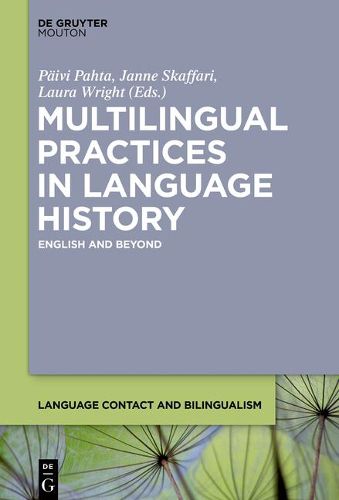Readings Newsletter
Become a Readings Member to make your shopping experience even easier.
Sign in or sign up for free!
You’re not far away from qualifying for FREE standard shipping within Australia
You’ve qualified for FREE standard shipping within Australia
The cart is loading…






This title is printed to order. This book may have been self-published. If so, we cannot guarantee the quality of the content. In the main most books will have gone through the editing process however some may not. We therefore suggest that you be aware of this before ordering this book. If in doubt check either the author or publisher’s details as we are unable to accept any returns unless they are faulty. Please contact us if you have any questions.
Texts of the past were often not monolingual but were produced by and for people with bi- or multilingual repertoires; the communicative practices witnessed in them therefore reflect ongoing and earlier language contact situations. However, textbooks and earlier research tend to display a monolingual bias. This collected volume on multilingual practices in historical materials, including code-switching, highlights the importance of a multilingual approach. The authors explore multilingualism in hitherto neglected genres, periods and areas, introduce new methods of locating and analysing multiple languages in various sources, and review terminology, theories and tools. The studies also revisit some of the issues already introduced in previous research, such as Latin interacting with European vernaculars and the complex relationship between code-switching and lexical borrowing. Collectively, the contributors show that multilingual practices share many of the same features regardless of time and place, and that one way or the other, all historical texts are multilingual. This book takes the next step in historical multilingualism studies by establishing the relevance of the multilingual approach to understanding language history.
$9.00 standard shipping within Australia
FREE standard shipping within Australia for orders over $100.00
Express & International shipping calculated at checkout
This title is printed to order. This book may have been self-published. If so, we cannot guarantee the quality of the content. In the main most books will have gone through the editing process however some may not. We therefore suggest that you be aware of this before ordering this book. If in doubt check either the author or publisher’s details as we are unable to accept any returns unless they are faulty. Please contact us if you have any questions.
Texts of the past were often not monolingual but were produced by and for people with bi- or multilingual repertoires; the communicative practices witnessed in them therefore reflect ongoing and earlier language contact situations. However, textbooks and earlier research tend to display a monolingual bias. This collected volume on multilingual practices in historical materials, including code-switching, highlights the importance of a multilingual approach. The authors explore multilingualism in hitherto neglected genres, periods and areas, introduce new methods of locating and analysing multiple languages in various sources, and review terminology, theories and tools. The studies also revisit some of the issues already introduced in previous research, such as Latin interacting with European vernaculars and the complex relationship between code-switching and lexical borrowing. Collectively, the contributors show that multilingual practices share many of the same features regardless of time and place, and that one way or the other, all historical texts are multilingual. This book takes the next step in historical multilingualism studies by establishing the relevance of the multilingual approach to understanding language history.